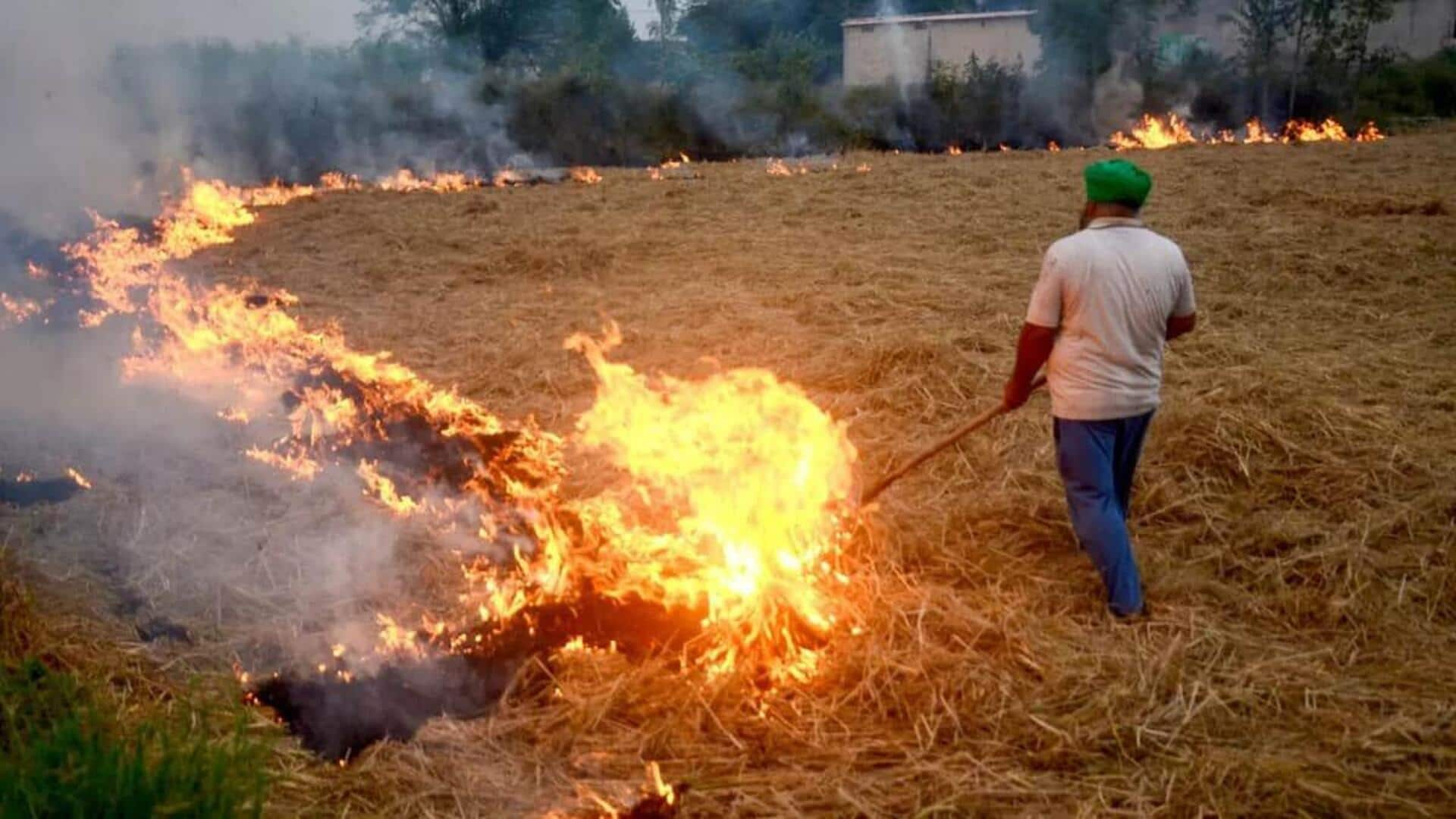
Delhi pollution: Punjab sees record farm fires amid SC scrutiny
What's the story
On Tuesday, Punjab reported nearly 1,000 farm fires, the highest single-day count this season.
The spike came even as the Supreme Court took note of rising pollution levels in north India.
According to the NDTV, Hiren Jethva, a NASA aerosol remote sensing scientist, noted that the timing of these fires has changed from the usual 1-2 pm window to later in the afternoon.
This has raised concerns about farmers trying to avoid satellite detection.
Pollution paradox
Pollution levels rise despite decrease in stubble burning
Jethva observed that pollution levels have not decreased despite a reported decline in stubble burning over the last three years.
"Pollution load has increased over the subcontinent—unseen in the last 20 years' data," he said.
This difference is especially pronounced in Delhi, where aerosol content and PM 2.5 levels have hit record highs.
Court directive
Supreme Court directs use of stationary satellite data
The Supreme Court also noted discrepancies between NASA's polar-orbiting satellites and a Korean geostationary satellite.
The court asked authorities to use stationary satellite data to monitor farm fires round-the-clock.
It also slammed delays in implementing pollution control measures under the Graded Response Action Plan (GRAP), stressing immediate action when air quality indices reach critical levels.
Ongoing debate
Debate over pollution sources and timing of farm fires
Prof Adarshpal Vig from the Punjab Pollution Control Board admitted to the high number of fires, but blamed pollution on seasonal weather changes.
He said other sources of pollution like vehicular and industrial emissions may not disperse due to winter conditions.
The debate rages on whether farmers are intentionally timing fires to avoid detection, with Jethva's analysis using Korean satellite data hinting at an uptick in late afternoon fire activities.